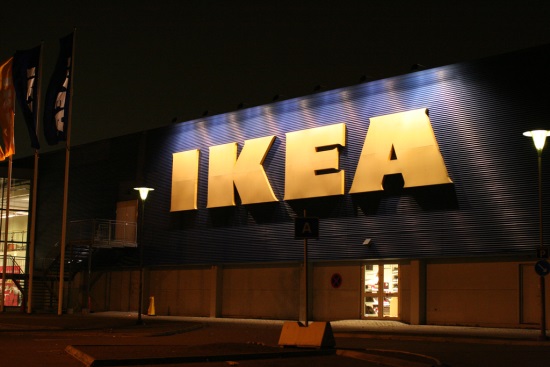The UK is in the midst of a housing boom, largely fuelled by help to buy schemes and initiatives designed to aid young people in purchasing their first home and setting foot on the property ladder. In turn, this has had a positive effect upon the profits and sales of furniture and homeware brands as homeowners choose to spend on big ticket items with more enthusiasm than has not been seen since before the start of the recession.

One such chain which has reaped the rewards of this boost in consumer confidence is Ikea, which recently released extremely positive annual results. The home furnishings giant saw a leap in global sales of 3.1 per cent, bringing the total sales in the 12 months to August 31st to 27.9 billion euros, or £23.6 billion.
Like for like sales also rose correspondingly, with an increase of 1.8 per cent indicating a strengthening within Ikea’s core international markets. According to the brand, emerging markets such as Russia and China played a large part in this success, although much progress was additionally made in the North American market, where flat pack furniture is enjoying its moment in the sun.
As a result of this popularity, Ikea has now increased its market share and is plunging ahead of its closest competitors. However, refusing to be complacent, Ikea has cited its aim to double sales by 2020 to 50 billion euros per annum.
Chief executive Peter Agnefijaell puts the continuing popularity of Ikea down to an ability to keep prices low whilst not skimping on quality.
He says; “Value for money is increasingly important to our customers – and our sales development shows that people all over the world appreciate our concept of good quality, well-designed products at low prices.”
At present, Ikea has 303 stores globally and sees a footfall of 690 million consumers per year. Yet with the chain’s popularity only increasing, especially in eastern markets, there is a good chance that further commercial property expansions will be announced during the current financial year.
The only negative contained within the report was the ongoing struggle in southern Europe, where the Eurozone crisis still rages on. However, with most other markets managing to make up for losses incurred in countries such as Spain and Italy, it seems that Ikea is on track to achieve its ambitious sales aims.
Do you think Ikea’s popularity will ebb as the economy recovers and consumers can afford to splash out on more expensive items, or will the furniture giant remain popular?
Previous Post
HMV Launches App to Encourage Shoppers